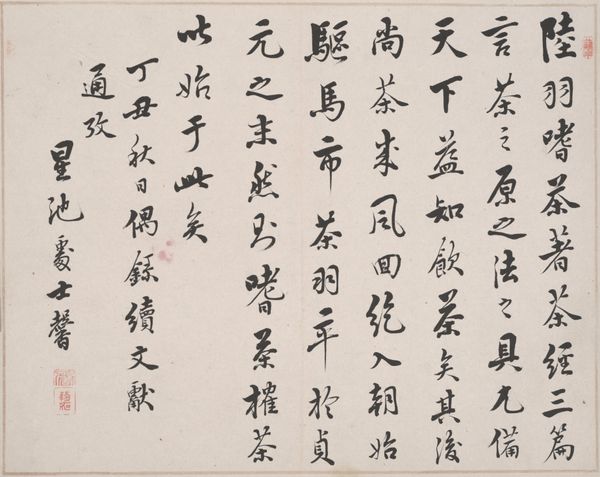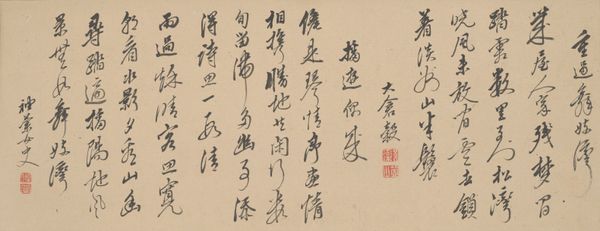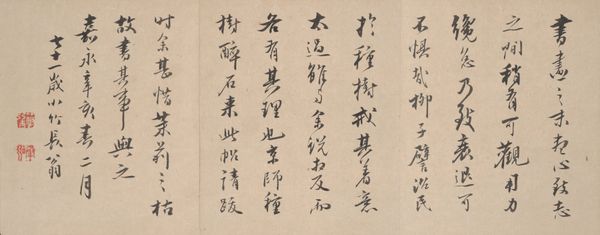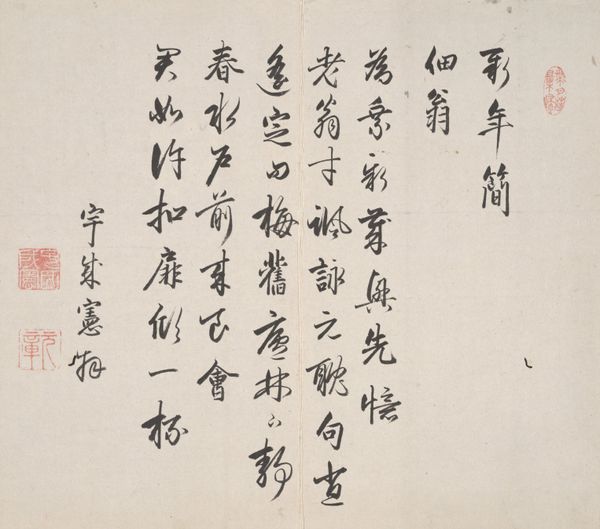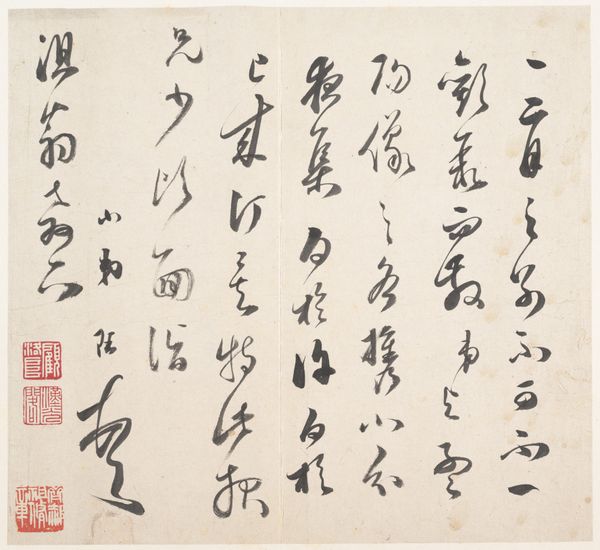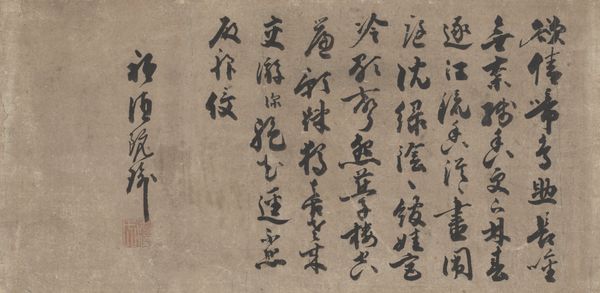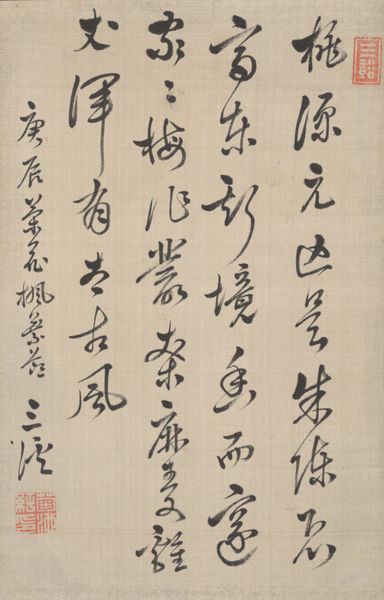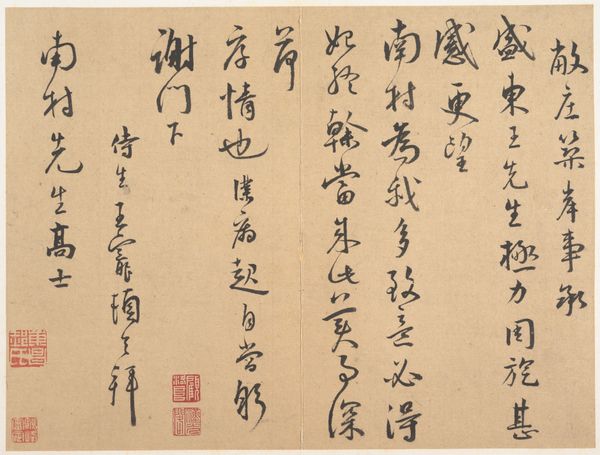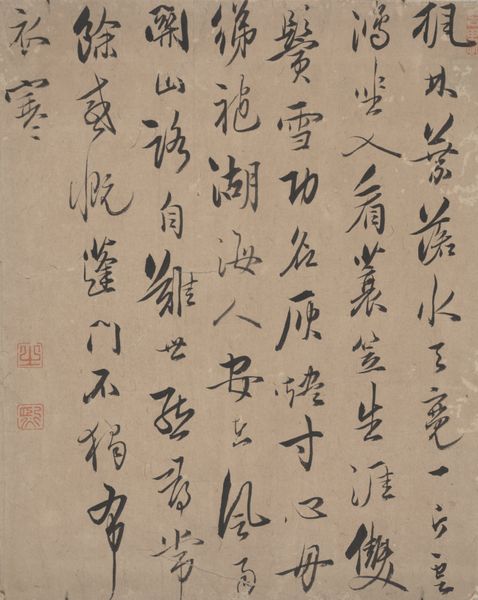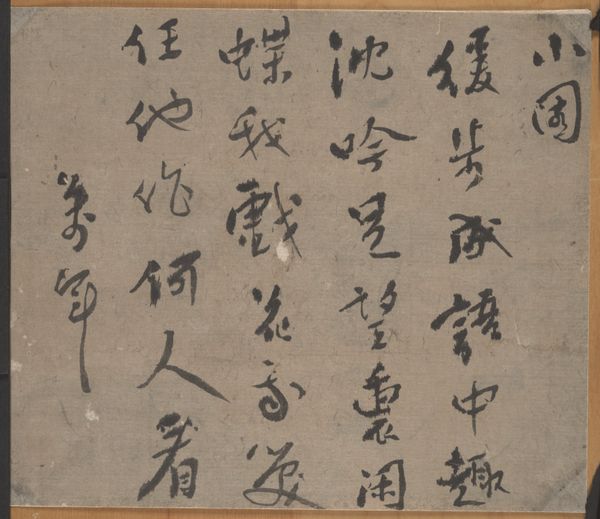
drawing, paper, ink
#
drawing
#
asian-art
#
paper
#
ink
#
calligraphy
Dimensions: 9 5/16 × 11 15/16 in. (23.65 × 30.32 cm) (image)39 5/16 × 17 1/4 in. (99.85 × 43.82 cm) (mount, without roller)
Copyright: Public Domain
This artwork presents us with a series of Chinese characters painted by Satō Issai, reflecting the artist's literary and calligraphic skill. The dominant visual symbol here is the character for 'green mountain,' 青山, evoking not just a physical landscape but also a deeper, symbolic meaning. Mountains in Chinese art represent the dwelling place of immortals and thus symbolize transcendence. In a similar way to the medieval European's spiritual pilgrimage, Chinese landscape paintings serve as a vehicle for spiritual journey, reflecting inner harmony. The imagery is about more than the mountain: it is a sacred place, and, symbolically, a passage to another world, to heaven. Consider how this longing for transcendence reappears in different eras. From the celestial mountains depicted in ancient Chinese landscape painting to the romanticized peaks of Caspar David Friedrich, who reflected on the Sublime, these natural formations are more than geographic features; they are mirrors reflecting the human desire to connect with something beyond the physical world. Here, the act of calligraphy itself becomes a bridge across time, as the artist taps into a collective memory, evoking emotions tied to mortality and the timeless quest for serenity.
Comments
No comments
Be the first to comment and join the conversation on the ultimate creative platform.
